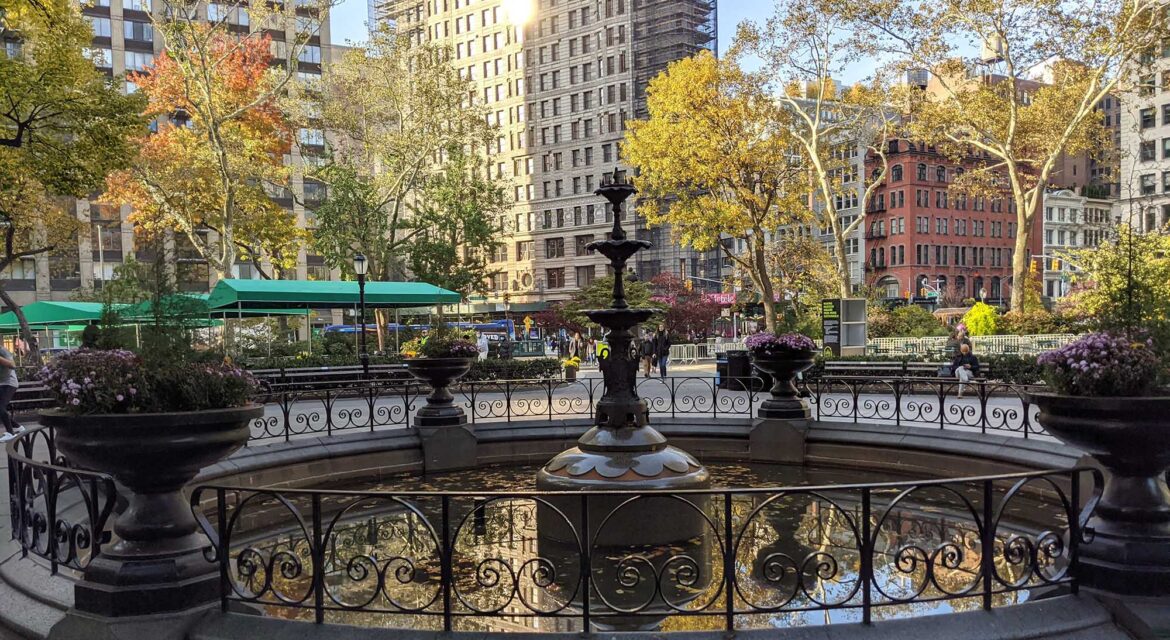 Named for the fourth President of the United States, Madison Square Park has carved out an identity that can be experienced throughout the surrounding neighborhoods and all of New York City. These experiences have impacted the monuments and engagement that are featured across the park, highlighting how such elements can attract audiences and positively impact entire communities.
Named for the fourth President of the United States, Madison Square Park has carved out an identity that can be experienced throughout the surrounding neighborhoods and all of New York City. These experiences have impacted the monuments and engagement that are featured across the park, highlighting how such elements can attract audiences and positively impact entire communities.

Named After President James Madison
 Utilized as a potter’s field in the 1700s, what would eventually become Madison Square Park was part of a military parade ground that was named for President James Madison in 1814. After a U.S. Army arsenal that resided in the space burned down, Madison Square Park opened as a public park in 1847.
Utilized as a potter’s field in the 1700s, what would eventually become Madison Square Park was part of a military parade ground that was named for President James Madison in 1814. After a U.S. Army arsenal that resided in the space burned down, Madison Square Park opened as a public park in 1847.
The original Madison Square Garden was located adjacent to the park. The third building to have that name was torn down in 1924 and then moved uptown. This new building retained the name, even though it was no longer located in the area of Madison Square, highlighting the impact of the identity it cultivated.
That same identity fueled notable events and experiences at the park over the years, which includes countless political protests and the lighting of America’s first community Christmas tree.
A new design in 1870 began the installation of monuments that now define the park, further cultivating the identity and experiences that permeate the space and surrounding neighborhoods and city.

The Monuments and Activities of Madison Square Park
 The Eternal Light Flagstaff defines the center of Madison Square Park on multiple levels. This monumental flagstaff honors the victorious forces of the U.S. Army and Navy after the conclusion of World War I and continues to be a place of reverence, being decorated with wreaths and flowers on a frequent basis. Nearby is the large statue of William H. Seward (1876), the Secretary of State who purchased Alaska in 1867, as well as the first New Yorker to have a monument erected in his honor. Madison Square Park is also home to the Admiral Farragut Monument, which has been mentioned as one of the finest outdoor monuments in New York City.
The Eternal Light Flagstaff defines the center of Madison Square Park on multiple levels. This monumental flagstaff honors the victorious forces of the U.S. Army and Navy after the conclusion of World War I and continues to be a place of reverence, being decorated with wreaths and flowers on a frequent basis. Nearby is the large statue of William H. Seward (1876), the Secretary of State who purchased Alaska in 1867, as well as the first New Yorker to have a monument erected in his honor. Madison Square Park is also home to the Admiral Farragut Monument, which has been mentioned as one of the finest outdoor monuments in New York City.
The Madison Square Fountain as well as the respective statues of Chester A. Arthur and Roscoe Conkling are notable in their own right but are just a few of the monuments that have allowed the community to revere the space in such a powerful way.
The connection that Madison Square Park has with audiences and the community is further driven by the installation of elements like the Shake Shack, which is a permanent stand that serves food and drink. A new playground in the northeast corner of the park has created additional experiences for audiences of all ages. Various temporary installations, as well as organized and spontaneous events, further connect the space to the surrounding communities.
All of these features showcase what it can mean when a space enables so many different experiences to create a positive impact for a community and the entire city.

What a City Park Can Be
 While the street names and neighborhoods around Madison Square Park continue to change and evolve, the experiences that the park has defined have created an incredible foundation upon which these improvements can be built. That outlook has defined the “what a city park can be” motto that is on display throughout Madison Square Park means. It showcases what kind of connection and engagement can result from such efforts.
While the street names and neighborhoods around Madison Square Park continue to change and evolve, the experiences that the park has defined have created an incredible foundation upon which these improvements can be built. That outlook has defined the “what a city park can be” motto that is on display throughout Madison Square Park means. It showcases what kind of connection and engagement can result from such efforts.

